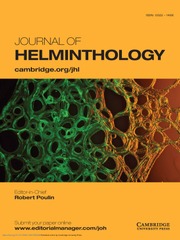No CrossRef data available.
Article contents
First detection of Psilotrema limosum in muskrat in East Asia and a description of Psilotrema elegans n. sp.
Published online by Cambridge University Press: 10 April 2025
Abstract
The East Asian region has seen the first discovery of trematodes of the genus Psilotrema in the muskrat Ondatra zibethicus. When studying the morphology of the trematodes, two morphotypes were identified among individuals of Psilotrema spp., the differences between which at the morphological level are equivalent to those between species. The affiliation of one of these morphotypes with the bird parasite Psilotrema limosum was established based on partial sequences of genes coding for 28S ribosomal RNA, nad1, and cox1 mitochondrial DNA. Based on the analysis of these three markers, we classified individuals with this morphotype as P. limosum, despite some morphological features of worms infecting birds. At the same time, the worms with second morphotype had no interspecies differences based on the first two markers, while the cox1 gene confirmed the separation of these samples on a species level. These trematodes were described as a new species, Psilotrema elegans n. sp., based on both morphological and molecular data.
Keywords
- Type
- Research Paper
- Information
- Copyright
- © The Author(s), 2025. Published by Cambridge University Press


